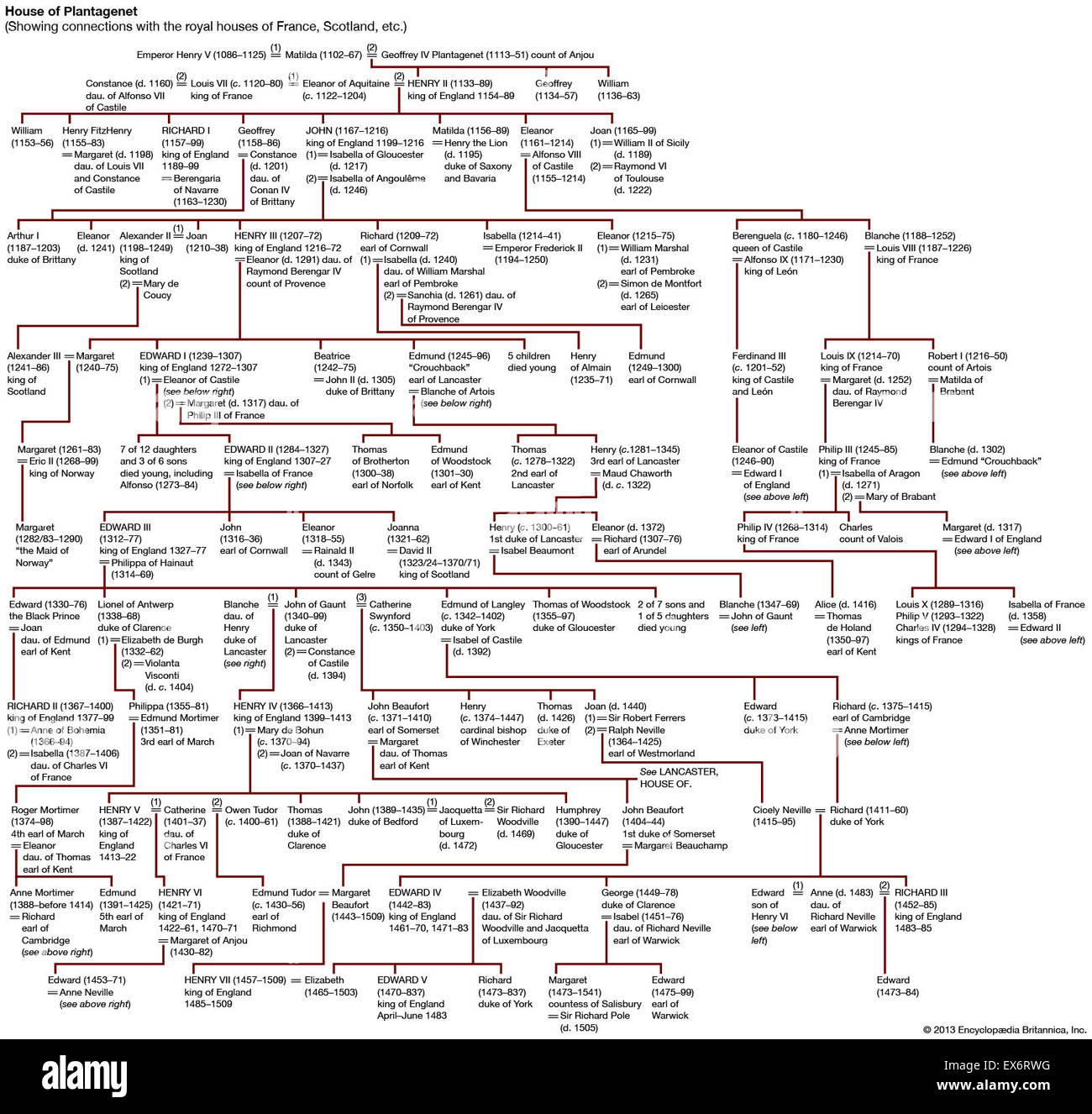Table Of Content

The Gamble House will open the doors to its servants' hall and rooms for the first time in its history. The House of Valois was a branch of the Capetian dynasty or the House of Capet in France. The House of Capet was succeeded by the House of Valois to the throne of France. They remained the royal house of France from 1328 to 1598.

What was the House of Plantagenet?
There was popular discontent with Richard’s weak rule and within weeks, Henry had the upper hand. Richard was taken into Bolingbroke’s custody in August and abdicated in his favour on September 30th 1399. He died in mysterious circumstances in 1400 by which time his cousin had established his rule as Henry IV, first king of the House of Lancaster. As Richard attained adulthood, he gave power and influence to favourites, causing divisions within the ruling circle which led to dissent and bloodshed. Government was weakened while Richard acted in an increasingly autocratic manner. His weak rule encouraged parties to form against him and by 1397 he was being described as a tyrant.
House of Lancaster
The Plantagenets by Dan Jones – review - The Guardian
The Plantagenets by Dan Jones – review.
Posted: Sun, 03 Jun 2012 07:00:00 GMT [source]
Richard spent only six months of his 10-year reign in England. Henry II (ruled 1154–89) ruled over a huge area of Europe. The lands stretched from southwest France to the Scottish borders. He inherited Anjou from his father and gained southwestern France from his marriage to Eleanor of Aquitaine. During Henry’s reign, the legal system in England was improved.
The English royal house of Plantagenet has a name that is thought to derive from the Latin for which plant?
Under Henry III, Magna Carta was reissued and the barons united. Louis left England, with a large pay off for relinquishing his claims. House of Plantagenet, royal house of England, which reigned from 1154 to 1485 and provided 14 kings, 6 of whom belonged to the cadet houses of Lancaster and York. The royal line descended from the union between Geoffrey, count of Anjou (died 1151), and the empress Matilda, daughter of the English king Henry I. The House of Plantagenet was the first truly armigerous royal dynasty of England. As the French-sounding name suggests, the Plantagenet dynasty originated across the channel, and both in blood and outlook they were decidedly continental.
Henry V
Imprisoned in 1540 at the orders of King Henry VIII for treason. Died two days after receiving the news he was to be released. Defeated and killed at the Battle of Wakefield in 1460. Originator of the claim of the House of York to the throne.
The king was no longer just the most powerful man in the nation, holding the prerogative of judgement, feudal tribute and warfare, but had defined duties to the realm, underpinned by a sophisticated justice system. A distinct national identity was shaped by their conflict with the French, Scots, Welsh and Irish, as well as by the establishment of Middle English as the primary language. John’s reign saw most of England’s lands in France lost. This followed him losing control of lands under his stewardship in Ireland. His rule also saw conflict with the barons and an invasion by Prince Louis of France.John signed Magna Carta, a document setting out the rights and responsibilities of the king and nobility. The relationship between tthe king and barons, along with the occupation of parts of England by Louis, were pressing matters following John’s early death.
His throne passed to two of his sons, Richard I and John, and despite the disastrous reign of the latter, the Plantagenets retained their power. Henry III would oversee rapid changes in administration in England while his son, Edward I, was a celebrated soldier king whose Crusades were as famous as his battles against the Welsh and Scots. The longest reigning royal house in English history took the throne in October 1154 with the accession of Henry II after a long battle for power with his cousin, King Stephen. Henry soon consolidated his power and began the process of building an empire that would stretch across Europe.
Below shown is the family tree of the Plantagenet family. It starts with the reign of King Henry II in 1154 and ends with the last Plantagenet King Richard III of the House of York and Lancaster in the year 1485. Defeats King Richard III at the Battle of Bosworth Field in 1485, claims the throne as King Henry VII. Defeated and killed at the Battle of Bosworth Field in 1485, fighting against Henry Tudor, later King Henry VII. Matriarch of the Pole family; mother of Cardinal Reginald Pole, later Archbishop of Canterbury.
He was the last English king to reign over Anjou, which he lost in the early 1200s. The House of Plantagenet was a royal dynasty that ruled England for 331 years, from 1154 to 1485. The dynasty is also known as the House of Anjou or the Angevin dynasty. It was originally a noble family from northwest France. Some historians believe that the Plantagenet dynasty ended with Richard II’s death in 1400 and that it was followed by the Houses of Lancaster and York. However, York and Lancaster were both branches of the Plantagenet family tree.
England’s ambitions for land on mainland Europe and a desire to assert rights to ancestral lands led to war in France. The Hundred Years War saw England and continental allies fighting for control of Normandy and for the French crown. The English, notably at Crecy, Poitiers and Agincourt. The peak of English success came under Henry V. He won the right for himself or his ancestor to inherit the crown of France. It was a shortlived reign over lands that were soon retaken by French forces. The house of Plantagenet ruled England from the accession of Henry II in 1154 to the death of Richard III at the Battle of Bosworth Field in 1485.
When Mortimer revealed the plot to the king, Richard was executed for treason. Richard's childless older brother Edward was killed at the Battle of Agincourt later the same year. Under the Plantagenets, England was transformed, although this was only partly intentional. The Plantagenet kings were often forced to negotiate compromises such as Magna Carta, which constrained royal power in return for financial and military support.
Richard, however, had a grander and more elaborate vision of kingship than many of his predecessors, and he introduced the terms ‘your majesty’ and ‘your high majesty’ to the court vocabulary. Join historians and history buff’s alike with our Unlimited Digital Access pass to every military history article ever published (over 3,000 articles) in Sovereign’s military history magazines. Our database is searchable by subject and updated continuously.
England was involved in the crusades and the European wars. It was also the duty of the Plantagenet monarchs to protects Anjou, Normandy and England. During his later reign, there are vivid accounts of the king sitting in splendor on his throne after dinner and glaring around the room at his assembled courtiers. Whomever his gaze rested upon was to fall to their knees in humble appreciation of his royal awesomeness.
This was an extraordinary grant, since they were not descended from the English royal family. John declared that he had been forced to sign the Magna Carta against his will and he tried to gather support from France to fight the barons. He died before he could carry this out, leaving his crown to his nine-year-old son, Henry. The first Plantagenet king was Henry II, who was crowned in 1154.
Within months of his father's death, Richard's childless uncle, Edward Duke of York, was killed at Agincourt. Richard was allowed to inherit the title of Duke of York in 1426. The resulting Treaty of Troyes stated that Henry's heirs would inherit the throne of France, but conflict continued with the Dauphin. The era of the rule of the Plantagenet dynasty saw many conflicts and wars.
The dynasty ruled England and much of France during the medieval period - monarchs included Henry II, Henry III, Edward II and the boy king Richard II - and their hatred, revenge, jealousy and ambition transformed history. Several powerful men in the kingdom began to fight for control of the government. This led to a long period of civil war between the Houses of Lancaster and York, known as the Wars of the Roses (1455–85). During this period Henry was overthrown and imprisoned by his cousin, Edward of York, who became Edward IV (ruled 1461–70 and 1471–83). Edward IV, too, was overthrown briefly, but he regained power in 1471.

No comments:
Post a Comment